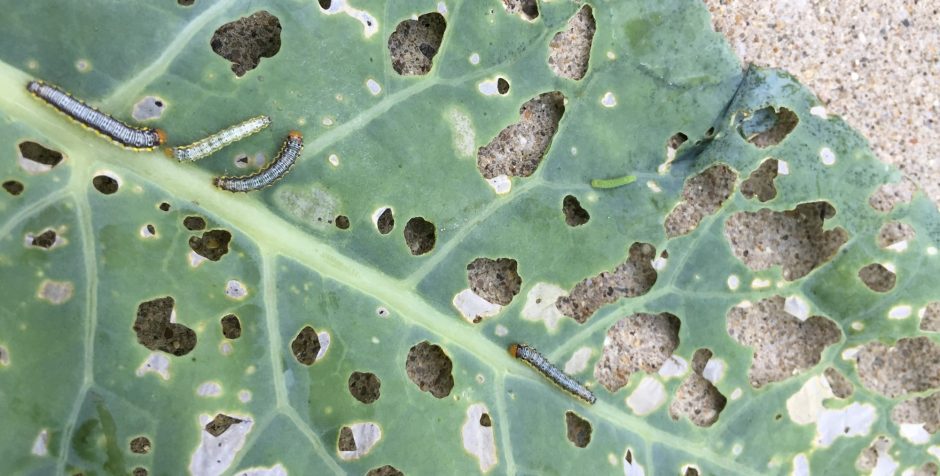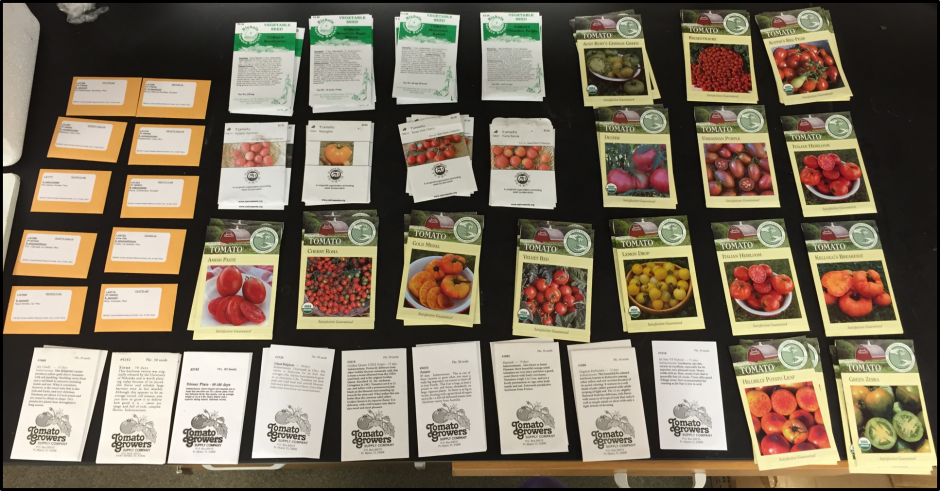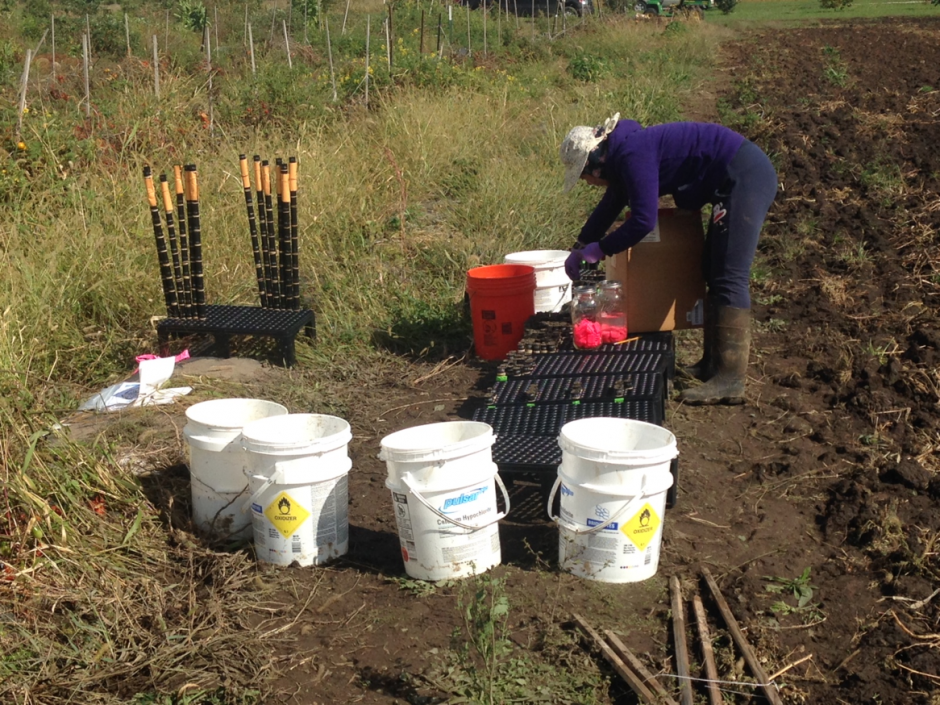Ecological Pest Management
With an ensemble of measures and acquired knowledge our team is designing and implementing strategies to support the ecosystem in order to reduce pest survival in crops. Our focus is to enhance natural enemies (predator, parasitoid and pathogen) abundance and habitat and reducing the crops’ susceptibility to the pest. Biodiversity evolution, pest and natural enemies monitoring surveys are key parts of the research. Results gathered will help adjusting the implementation of the Ecological Pest Management techniques.
The overall idea of this strategy is to focus on preventive actions when pest level is still low rather than reactive action when damages are noticeable on the crop yield.

Baiting fresh fruit traps for spotted wing drosophila sampling (Photo: Duncan McHugh) 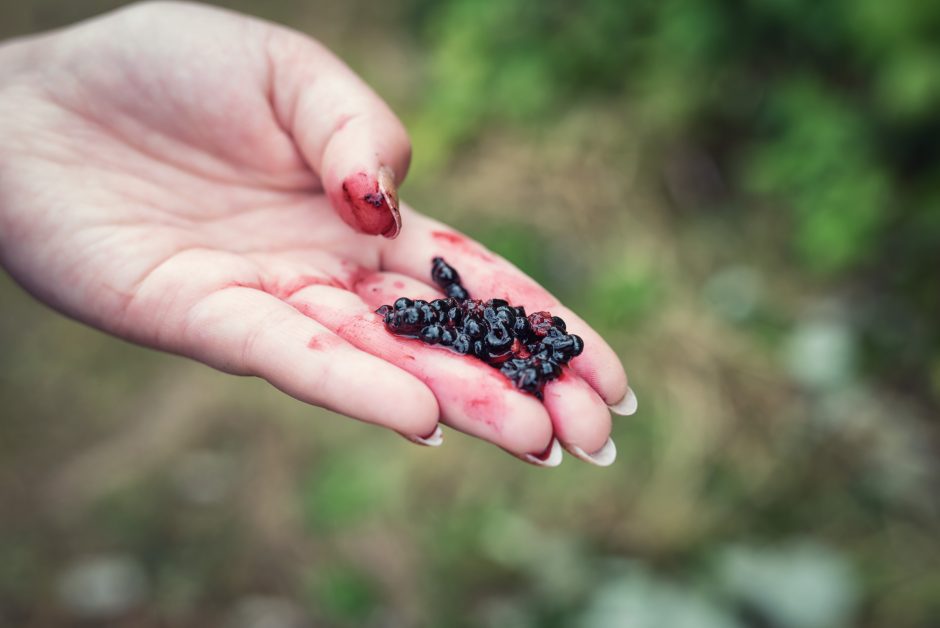
Smashing invasive Himalayan blackberries to look for spotted wing drosophila (Photo: Duncan McHugh) 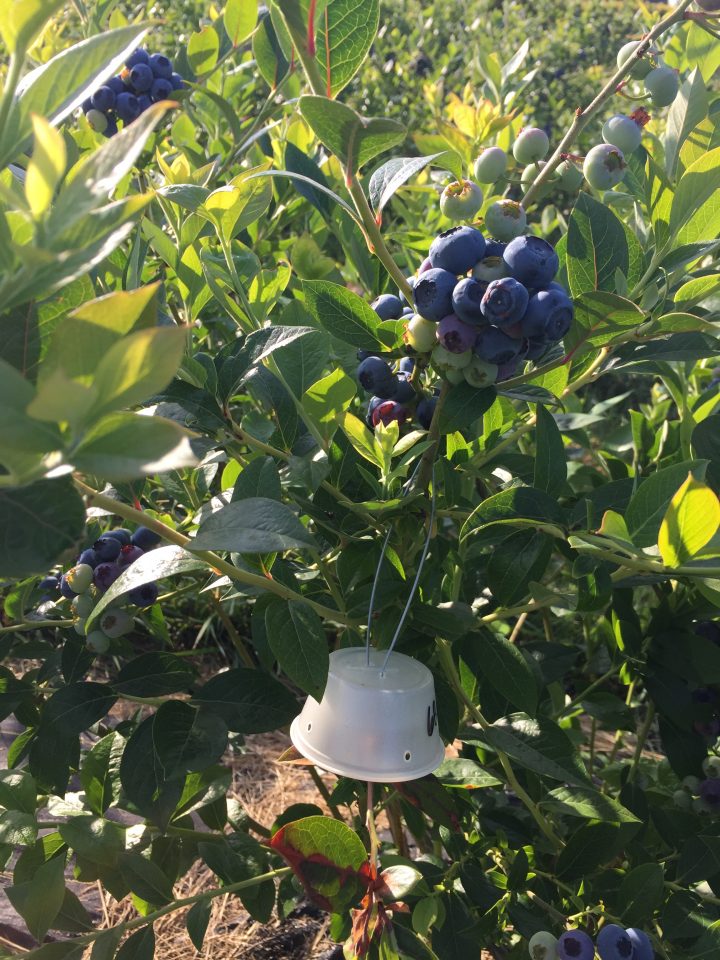
Peppermint oil UBC Farm (Photo: Duncan McHugh)
Plant Domestication
Has the process of domestication changed how plants interact with herbivores and their natural enemies? Humans have fundamentally altered the evolution of agricultural plants through domestication. In some cases this has led to reduced defenses in crops compared to their wild relatives, perhaps as a side-effect of selected breeding and because crops are buffered from natural selection due to cultivation practices (e.g. protection from pests, pathogens, and weeds).
We are researching the ecological effects of trait loss in crop plants, and the evolutionary relationships among different defense traits using these diverged populations.
Plant Tolerance of Herbivory
Why have some plants evolved to resist herbivory while others are less defended, but able to tolerate larger amounts of damage? Do these two components of defense, resistance (avoiding being eaten) and tolerance (enduring being eaten), differ in their relationships to growth and reproduction, and when are they likely to co-occur? Do herbivores select for tolerant plants or is tolerance a by-product of selection from plant competitors? Does tolerance fundamentally differ from resistance in its impacts on herbivore population dynamics and effects on higher trophic levels?
We have been examining tolerance and tolerance traits in a variety of systems, including tomato and with invasive Chinese tallow tree, and seek to identify a tolerance mechanism that could be the target of plant improvement. We are also directly examining the evolution of tolerance and resistance using common mustard, Brassica rapa (pictured below in a competition assay), and experimental evolution.
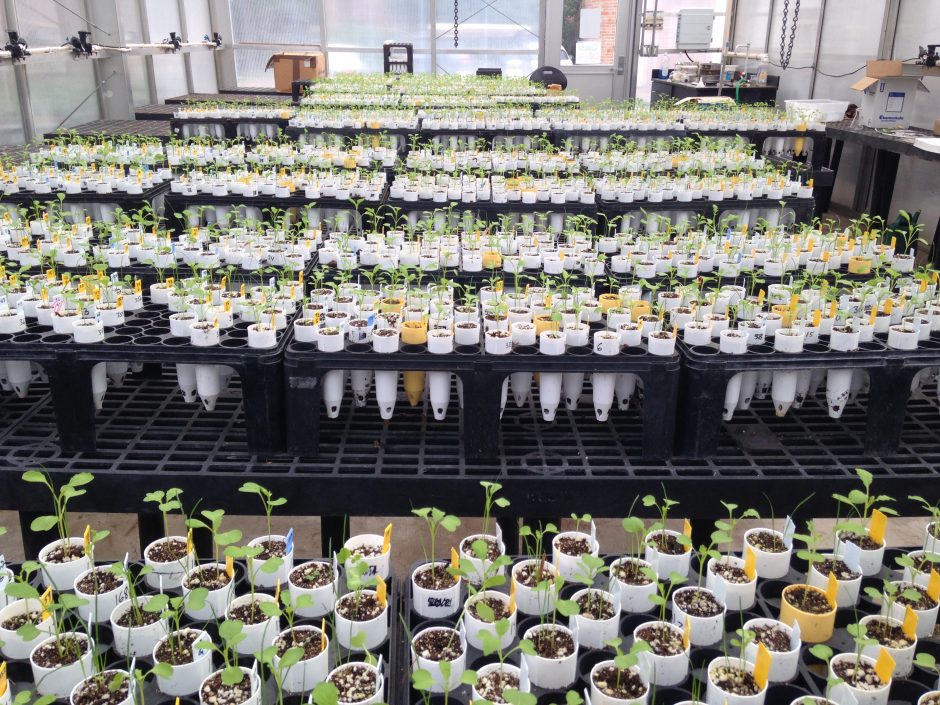
Plant Invasions
What happens to defenses when plants leave their herbivores and natural enemies behind, but gain new interactions? One approach to understanding the relationship between the biotic environment, herbivore defense, and plant success is to compare populations differing in evolutionary history among environments that differ in the type or strength of biotic interactions. For example, it is hypothesized that the differences in biotic pressure between the native and introduced ranges of plants contribute to the evolution of increased competitive ability in invasive plants. That is, in the absence of herbivory, plants can reallocate energy used for defense towards growth and reproduction and, over long enough evolutionary time, populations can diverge in traits related to these key biotic interactions.
We have been examining these differences in biotic interactions and plant traits in a range of invasive plants.
